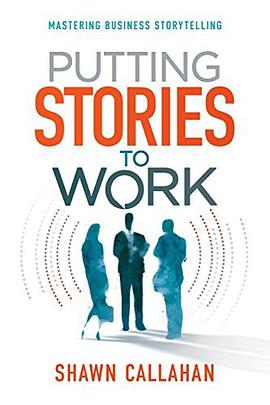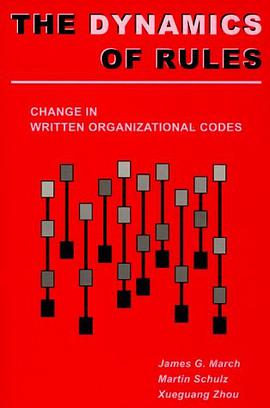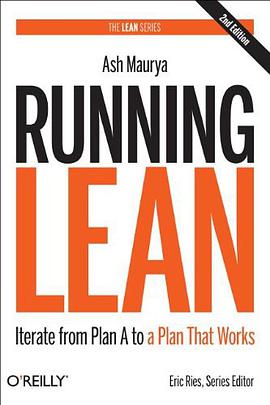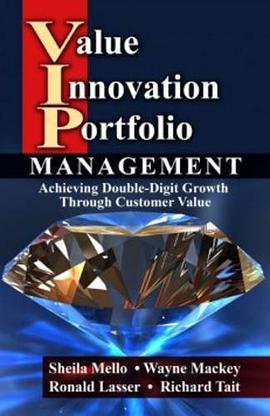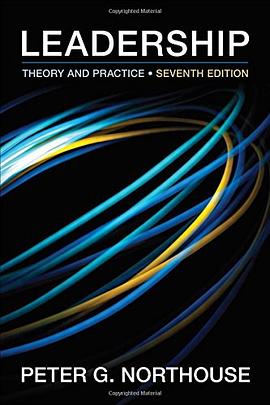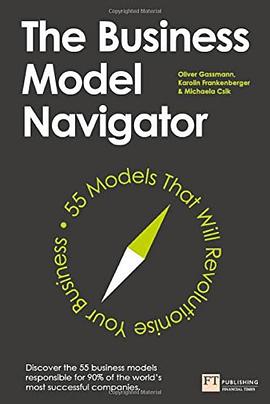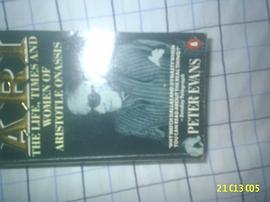企業
Putting Stories to Work 豆瓣
作者:
Shawn Callahan
Pepperberg Press
2016
- 3
The Idea Factory 豆瓣
作者:
Jon Gertner
Penguin Press
2012
- 3
A sweeping, atmospheric history of Bell Labs that highlights its unparalleled role as an incubator of innovation and birthplace of the century's most influential technologies. Bell Laboratories, which thrived from the 1920s to the 1980s, was the most innovative and productive institution of the twentieth century. Long before America's brightest scientific minds began migrating west to Silicon Valley, they flocked to this sylvan campus in the New Jersey suburbs built and funded by AT&T. At its peak, Bell Labs employed nearly fifteen thousand people, twelve hundred of whom had PhDs. Thirteen would go on to win Nobel prizes. It was a citadel of science and scholarship as well as a hotbed of creative thinking. It was, in effect, a factory of ideas whose workings have remained largely hidden until now. "New York Times Magazine" writer Jon Gertner unveils the unique magic of Bell Labs through the eyes and actions of its scientists. These ingenious, often eccentric men would become revolutionaries, and sometimes legends, whether for inventing radio astronomy in their spare time (and on the company's dime), riding unicycles through the corridors, or pioneering the principles that propel today's technology. In these pages, we learn how radar came to be, and lasers, transistors, satellites, mobile phones, and much more. Even more important, Gertner reveals the forces that set off this explosion of creativity. Bell Labs combined the best aspects of the academic and corporate worlds, hiring the brightest and usually the youngest minds, creating a culture and even an architecture that forced employees in different fields to work together, in virtually complete intellectual freedom, with little pressure to create moneymaking innovations. In Gertner's portrait, we come to understand why both researchers and business leaders look to Bell Labs as a model and long to incorporate its magic into their own work. Written with a novelist's gift for pacing and an ability to convey the thrill of innovation, "The Idea Factory" yields a revelatory take on the business of invention. What are the principles of innovation? How do new technology and new ideas begin? Are some environments more favorable than others? How should they be structured, and how should they be governed? Can strokes of genius be accelerated, replicated, standardized? The history of Bell Labs provides crucial answers that can and should be applied today by anyone who wants to understand where good ideas come from.
Effectuation 豆瓣
作者:
Saras D. Sarasvathy
Edward Elgar Pub
2008
On Leadership 豆瓣
作者:
James G. March
/
Thierry Weil
Wiley-Blackwell
2005
- 11
For over 50 years, James G. March has made a sustained and innovative contribution to the study of organizations. In his renowned course on leadership at Stanford University he explores the problems of leadership using works of great literature, such as War and Peace and Don Quixote. These essays are based on March's notes for his course lectures. The notes have been interpreted by Thierry Weil, and translated here from his original French interpretation.March uses literature to examine a set of dilemmas related to leadership - questions concerning the balance between private life and public duties, between ingenuity and innocence, between diversity and integration, and between the expression and the control of sexuality. He encourages us to explore ideas that are sometimes subversive and unpalatable, but may allow organizations to adapt in a rapidly changing world.
The Ambiguities of Experience 豆瓣
作者:
James March
Cornell University Press
2010
- 4
In The Ambiguities of Experience , James G. March asks a deceptively simple question: What is, or should be, the role of experience in creating intelligence, particularly in organizations? Folk wisdom both trumpets the significance of experience and warns of its inadequacies. On one hand, experience is described as the best teacher. On the other hand, experience is described as the teacher of fools, of those unable or unwilling to learn from accumulated knowledge or the teaching of experts. The disagreement between those folk aphorisms reflects profound questions about the human pursuit of intelligence through learning from experience that have long confronted philosophers and social scientists. This book considers the unexpected problems organizations (and the individuals in them) face when they rely on experience to adapt, improve, and survive.
While acknowledging the power of learning from experience and the extensive use of experience as a basis for adaptation and for constructing stories and models of history, this book examines the problems with such learning. March argues that although individuals and organizations are eager to derive intelligence from experience, the inferences stemming from that eagerness are often misguided. The problems lie partly in errors in how people think, but even more so in properties of experience that confound learning from it. 'Experience,' March concludes, 'may possibly be the best teacher, but it is not a particularly good teacher.'
While acknowledging the power of learning from experience and the extensive use of experience as a basis for adaptation and for constructing stories and models of history, this book examines the problems with such learning. March argues that although individuals and organizations are eager to derive intelligence from experience, the inferences stemming from that eagerness are often misguided. The problems lie partly in errors in how people think, but even more so in properties of experience that confound learning from it. 'Experience,' March concludes, 'may possibly be the best teacher, but it is not a particularly good teacher.'
The Dynamics of Rules 豆瓣
作者:
James March
/
Martin Schulz
…
Stanford University Press
2000
- 8
Written rules in formal organizations are distinctive elements of organizational history; they shape organizational change and are in turn shaped by it. These rules are created, revised, and eliminated in ways that leave historical traces, and they have a visibility and durability that elude non-written rules. They thus provide rich data for an empirical probe into the dynamics of organizational history. This study uses qualitative and quantitative data from the history of a specific organization, Stanford University, to develop speculations about the ways in which written rules change. It contributes both to a theory of rules and to theories of organizational decision-making, change, and learning. Organizations respond to problems and react to internal or external pressures by focusing attention on existing and potential rules. The creation, modification, or elimination of a rule, then, is a response to events in the outside environment (such as new government regulations) or to events within the organization (such as alterations in internal government structures). The authors elaborate a simple set of ideas about written rules and their dynamics, emphasizing the interplay among periodic major shocks to the system from outside, experiences with individual rules as they age and are revised, and the spread of effects through an interconnected set of rules. It is a story in which changes introduced in one part of a rule system create adjustments in other parts, including the same rule later in time, as the consequences of the changes are experienced and as rule-making attention is mobilized, satiated, and redirected. These processes involve the full panoply of political negotiation, symbolic competition, discussion, and problem solving that are typical of organizational decision making.
Running Lean 豆瓣
作者:
Ash Maurya
O'Reilly Media
2012
- 3
Are you an entrepreneur about to create a new web application? If you want to maximize your chances of building something customers want, this book demonstrates ways to apply and test techniques for customer development, Lean Startup, and bootstrapping. Learn how to identify and engage customers throughout the development cycle so you can focus on building a product that people will actually buy and use. By rigorously following the techniques described in Running Lean, you can eliminate waste - whether it's time, money, effort, or all of the above - and get your product to market quickly. Refined through the real-world experiences of dozens of startup companies, these techniques are part of Eric Ries' Lean Startup methodology. Principles covered in this book include: * Find a problem worth solving, then define a solution * Demo before building * Pricing is part of the product * Maximize for speed, learning, and focus * Build a continuous feedback loop with customers throughout the product development cycle * Right Action, Right Time * Build a path to customers from day one
Value Innovation Portfolio Management 豆瓣
作者:
Sheila Mello
/
Wayne Mackey
…
J Ross Publishing
2007
- 4
Leadership 豆瓣
作者:
Peter G Northouse
SAGE Publications, Inc
2015
- 2
Translated into 12 different languages and used in 89 countries, this market-leading text successfully combines an academically robust account of the major theories and models of leadership with an accessible style and practical examples that help students apply what they learn. Peter G. Northouse uses a consistent format for each chapter, allowing students to compare the various theories. Each chapter includes three case studies that provide students with practical examples of the theories discussed. Adopted at more than 1,000 colleges, universities, and institutions worldwide, Leadership: Theory and Practice provides readers with a user-friendly account of a wide range of leadership research in a clear, concise, and interesting manner.
Business Model Management 豆瓣
作者:
Bernd W. Wirtz
Springer Gabler
2017
The Business Model Navigator 豆瓣
作者:
Oliver Gassmann
/
Karolin Frankenberger
…
FT Publishing International
2014
- 10
Macht in Unternehmen 豆瓣
作者:
Hajnal, Ivo 编
Springer
2011
- 10
Macht und Herrschaft in Unternehmen 豆瓣
作者:
Ralf Werner
GRIN Verlag
2008
- 3
Die großen Management Consultants 豆瓣
作者:
Dietmar Fink
/
Bianka Knoblach
Vahlen Franz Gmbh
2003
- 6
Adolf Jandorf 豆瓣
作者:
Nils Busch-Petersen
Hentrich & Hentrich Gbr
2007
- 9
Chinas Bosse 豆瓣
作者:
Wolfgang Hirn
Campus Verlag Gmbh
2018
- 2
Unequal Protection 豆瓣
作者:
Thom Hartmann
Berrett-Koehler Publishers
2010
- 6
Did Supreme Court sell out America's citizens in the nineteenth century, with consequences lasting to this day? Is there a way for American citizens to recover democracy of, by, and for the people? Thom Hartmann takes on these most difficult questions and tells a startling story that will forever change your understanding of American history. Amongst a deep historical context, Hartmann describes the history of the Fourteenth Amendment created at the end of the Civil War to grant basic rights to freed slaves and how it has been used by lawyers representing corporate interests to extend additional rights to businesses far more frequently than to freed slaves. Prior to 1886, corporations were referred to in U.S. law as 'artificial persons.' But in 1886, after a series of cases brought by lawyers representing the expanding railroad interests, the Supreme Court ruled that corporations were 'persons' and entitled to the same rights granted to people under the Bill of Rights. Since this ruling, America has lost the legal structures that allowed for people to control corporate behavior. In this revised and expanded second edition, Hartmann incorporates specific examples from today's headlines and proposes specific legal remedies that could truly save the world from political, economic and ecological disaster.
A History of Business in Medieval Europe, 1200-1550 豆瓣
作者:
Hunt, Edwin S./ Murray, James M.
Cambridge University Press
1999
- 3
This book demolishes the widely held view that the phrase 'medieval business' is an oxymoron. The authors review the entire range of business in medieval western Europe, probing its Roman and Christian heritage to discover the economic and political forces that shaped the organization of agriculture, manufacturing, construction, mining, transportation and marketing. Businessmen's responses to the devastating plagues, famines, and warfare that beset Europe in the late Middle Ages are equally well covered. Medieval businessmen's remarkable success in coping with this hostile new environment was 'a harvest of adversity' that prepared the way for the economic expansion of the sixteenth century. Two main themes run through this book. First, the force and direction of business development in this period stemmed primarily from the demands of the elite. Second, the lasting legacy of medieval businessmen was less their skillful adaptations of imported inventions than their brilliant innovations in business organization.

